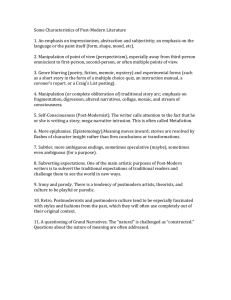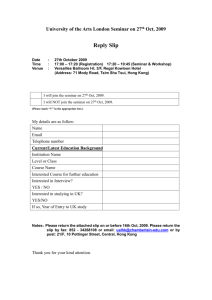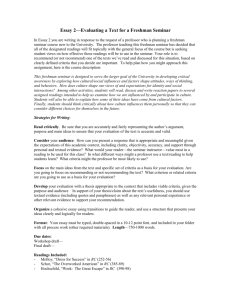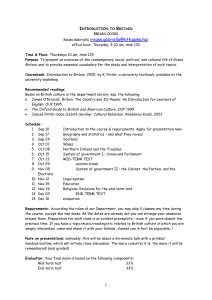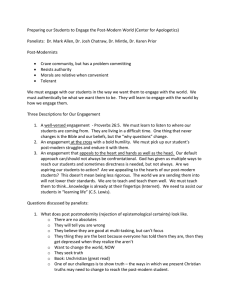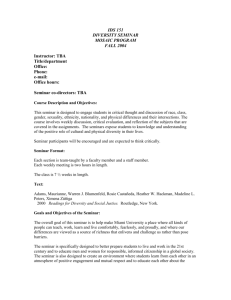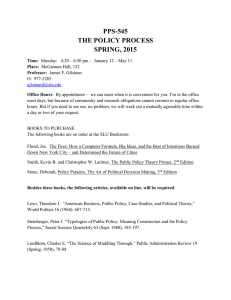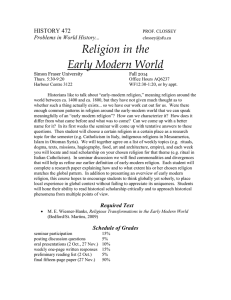Advanced Topics in Organization and
advertisement
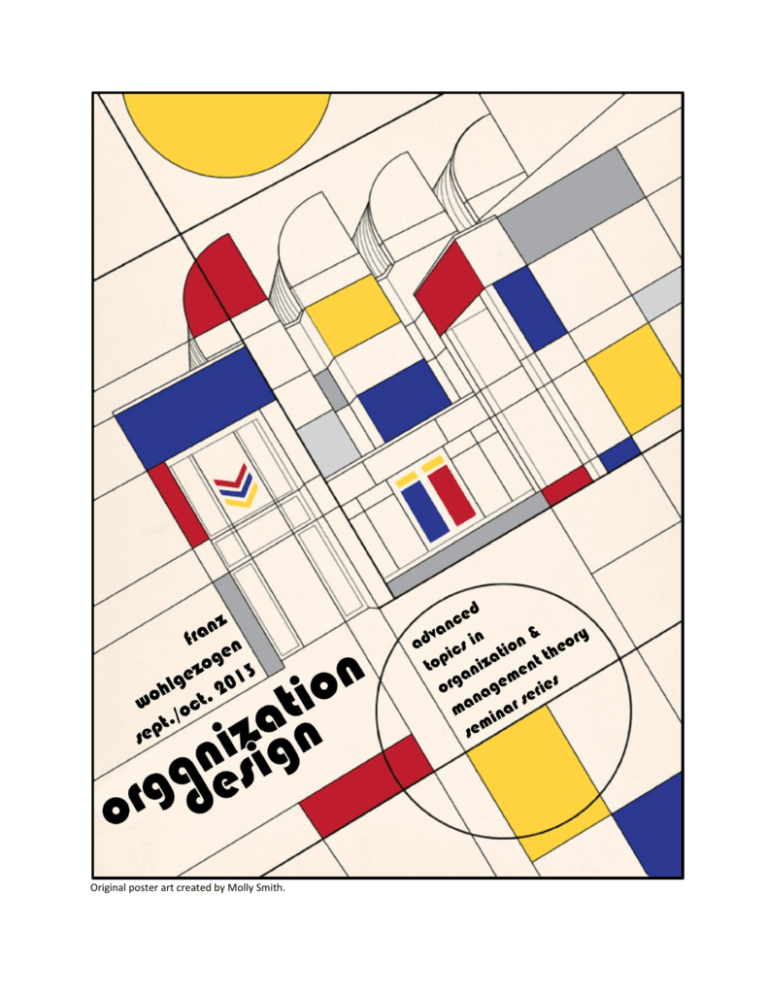
Original poster art created by Molly Smith. Seminar on Advanced Organization Design Syllabus Franz Wohlgezogen Course overview Organization design used to be one of the core areas of scholarly inquiry. Intellectual giants in our field Thompson, Chandler, Simon, March, Perrow, Pfeffer, Williamson, and many others - focused much of their efforts identifying the antecedents, dynamics, and consequences of organizational structures. Today the topic has all but disappeared from our top journals, and is relegated to – gasp – practitioneroriented and - double gasp - applied research-focused journals. In this seminar, we will critically examine the relevance of and opportunities for organizational design research today. Has organizational practice moved on from rigid structural solutions? After many decades of research, what is left to learn about organizational structure that hasn’t already be in examined and re-examined in decades past? How can organizational design scholarship connect to and inform research in related fields, such as strategy, decision-making, innovation management, corporate social responsibility, and others? My goal for the seminar is to cast a fresh light on classic scholarship on organizational design, explore with you contemporary work in this domain, and develop jointly with you opportunities for research in which organizational design plays a leading or a crucial supporting role. Course organization The seminar is designed (pun intended) to maximize opportunities for you to explore those aspects of organizational design that are most relevant and most interesting to you, and to bring this perspective into the classroom. Accordingly, the focus of this course is engaged and well-informed discussions during the sessions. To support and structure these interactions, each session has prep assignments that are crucial for our learning experience as a group. In addition there is a final assignment (10 pages double spaced, excluding references and appendix), which gives you an opportunity to reflect on your key lessons learned and insights gained from the course, and to sketch out research ideas that involve issues of organizational design. In addition I will ask you to fill out an online survey BEFORE the first session. In the survey I will ask you to provide a short summary of your research and research interests, your connection to the topic of organization design, and what type of organizations you are most interested in. Session Details Session 1 (Sep 24): Neo-Classic Perspectives To be prepared in advance: 1. Fill out the “onboarding survey” by Sep 22. 2. Bring a poster (digital or on paper) to class that presents your “Top 5 All Time Greatest” organization design papers or books (representations that go beyond a 5 point list are particularly appreciated) Readings: Mood piece: Robinson, W. (1925). Functionalizing a business organization. Harvard Business Review, 3(3), 321-338. Overview: Okhuysen, G. A., & Bechky, B. A. 2009. Coordination in Organizations: An Integrative Perspective. Academy of Management Annals, 3(1): 463-502. Rivkin, J. W., & Siggelkow, N. 2003. Balancing search and stability: Interdependencies among elements of organizational design. Management Science, 49(3): 290-311. Ocasio, W., & Wohlgezogen, F. 2010. Attention and control. In S. Sitkin, L. Cardinal, & K. BijlsmaFrankema (Eds.), Organizational Control: 191-221. Cambridge: Cambridge University Press. Sherman, J. D., & Keller, R. T. 2011. Suboptimal assessment of interunit task interdependence: Modes of integration and information processing for coordination performance. Organization Science, 22(1): 245-261. Session 2 (Oct 8): Post-Modern Perspectives To be prepared in advance: 1. Think and prepare a short note about what new and unique challenges organizations face today 2. Select one great article / book that to you best exemplifies a post-modern approach to studying organizations; email article or book excerpt to me and the class by Oct 4 Readings: Mood piece: Frost, R. (1936). Departmental. from: Frost, R.: A Further Range. New York: Henry Holt & Co. Overview: Parker, M. (1992). Post-Modern Organizations or Postmodern Organization Theory? Organization Studies; 13(1):1. Overview: Clegg, S. R. (1990). Modernist and Postmodernist Organizations. In: Modern Organizations – Organization Studies in a Postmodern World. London: Sage; p. 176-207 Cairns, G. (2002). Aesthetics, morality and power: Design as espoused freedom and implicit control. Human Relations, 55 (7): 799-820. Grandori, A. (1991). Negotiating efficient organizational forms. Journal of Economic Behavior and Organization 16: 319-340. THE ARTICLES / EXTRACTS SUBMITTED BY STUDENTS Session 3 (Oct 15): “Above and Beyond” Perspectives To be prepared in advance: 1. Email me and the class your final paper by Oct 14, 8am 2. Bring a hard-copy of your final paper to class 3. Be prepared to present your paper (5 minutes) and to provide constructive feedback for other students’ papers Readings: Mood piece: http://www.thedailyshow.com/watch/tue-january-29-2013/america-2--now-withmore-freedom---glenn-beck-s-utopia Overview: Gulati, R., Puranam, P., & Tushman, M. 2012. Meta‐organization design: Rethinking design in interorganizational and community contexts. Strategic Management Journal, 33(6): 571-586. Albers, S., Wohlgezogen, F., & Zajac, E. J. (2013). Strategic Alliance Structures: An Organization Design Perspective. Journal of Management. Langer, B. (2013). Creating positive social identity in firm-hosted online communities. Under review at Journal of Product Innovation Management. Ingram, P., Torfason, M. T. (2010). Organizing the in-between: The population dynamics of network-weaving organizations in the global interstate network. ASQ 55: 577-605. Fukuyama, F. 2006. Guidelines for Future Nation-Builders. In F. Fukuyama (Ed.), Nation-building: beyond Afghanistan and Iraq: 231-244. Baltimore, MD: JHU Press. FINAL PAPERS SUBMITTED BY STUDENTS
